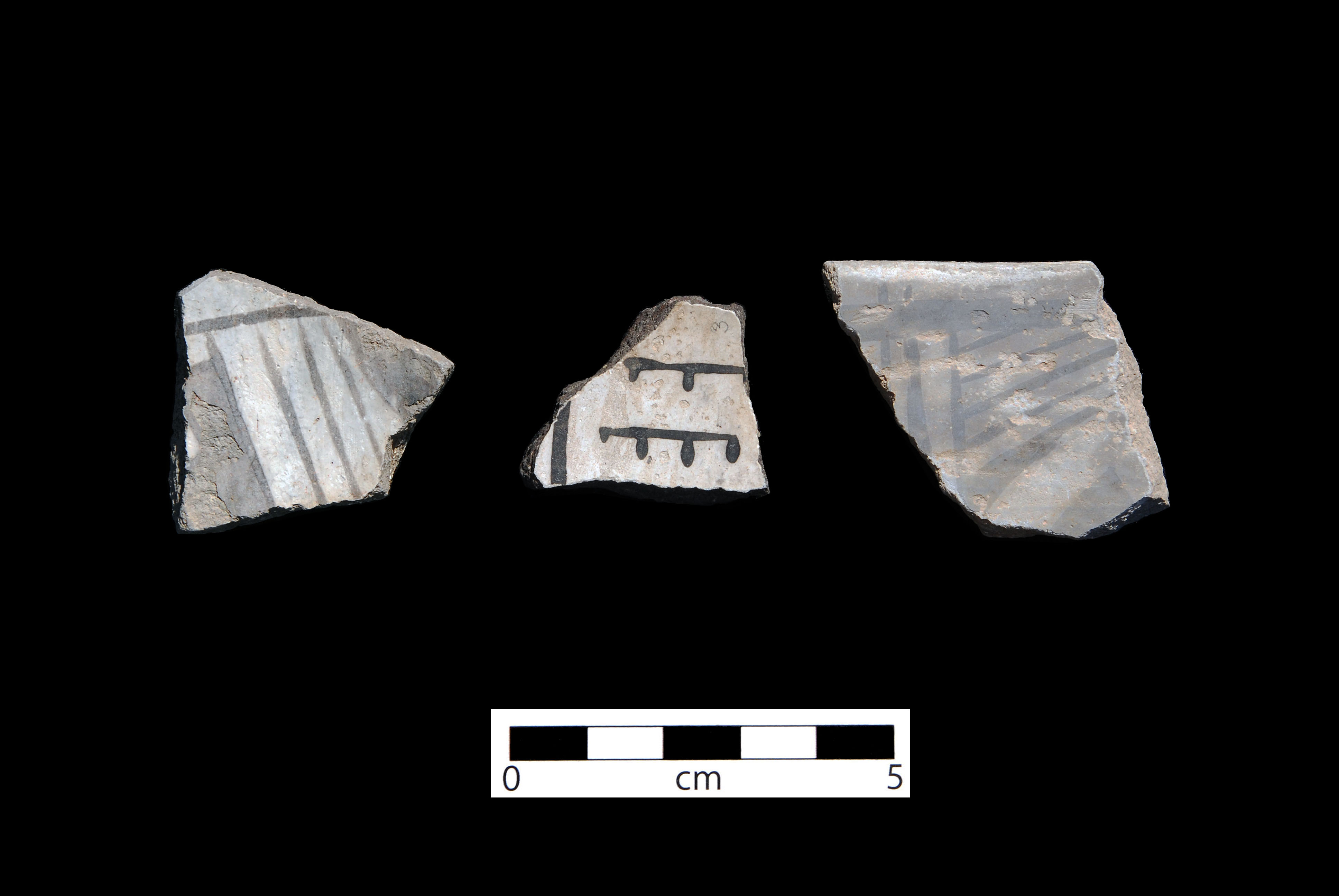St Joseph Black-on-white is a Little Colorado White Ware type found in the Petrified Forest, Arizona, and surrounding territory.
Archaeological Culture: Ancestral Puebloan
Date Range: A.D. 825-1025 (per Christian Downum, Northern Arizona University).
Construction: By coiling.
Firing: In a neutral to reducing atmosphere.
Core Color: Dark gray.
Carbon Streak: None.
Temper: Crushed sherd (appears as abundant white, gray or tan angular fragments); quartz and volcanic rock fragments, especially augite are common.
Surface Finish: Thick, chalky, white to light gray slip; moderately polished.
Surface Color; White.
Forms: Bowls, seed jars; possibly other jar forms.
Vessel Thickness: 5.2 to 6 mm.
Decoration:
- Paint: Organic paint, light gray to rich black; soaks into the slip.
- Pigments: Carbon.
- Design: Consists of Kana-a style thin lines and solid triangles. Grouped parallel thin lines are common, often overlapping at junctures. Triangles sometimes have ticked edges.
Comparisons: Kana-a Black-on-white has light paste, sand temper, and thinner slip (if any). Kiatuthlanna Black-on-white, Puerco Valley Variety has mineral paint.
Other Names: Dead River Black-on-white.
Compiled from the following sources:
Colton, Harold S., and Lyndon L. Hargrave. (1937) Handbook of Northern Arizona Pottery Wares. Museum of Northern Arizona Bulletin 11, Flagstaff, Arizona.
Hays-Gilpin, K., and Eric Van Hartesveldt. (1998) Prehistoric Ceramics of the Puerco Valley: The 1995 Chambers-Sanders Trust Lands Ceramic Conference. Museum of Northern Arizona, Flagstaff, Arizona
Compiled by:
April Peters, Northern Arizona University Anthropology Laboratories.

